Year 2
The science inquiry skills and science as a human endeavour strands are described across a two-year band. In their planning, schools and teachers refer to the expectations outlined in the achievement standard and also to the content of the science understanding strand for the relevant year level to ensure that these two strands are addressed over the two-year period. The three strands of the curriculum are interrelated and their content is taught in an integrated way. The order and detail in which the content descriptions are organised into teaching and learning programs are decisions to be made by the teacher.
Incorporating the key ideas of science
From Foundation to Year 2, students learn that observations can be organised to reveal patterns, and that these patterns can be used to make predictions about phenomena.
In Year 2, students describe the components of simple systems, such as stationary objects subjected to pushes or pulls, or combinations of materials, and show how objects and materials interact through direct manipulation. They observe patterns of growth and change in living things, and describe patterns and make predictions. They explore the use of resources from Earth and are introduced to the idea of the flow of matter when considering how water is used. They use counting and informal measurements to make and compare observations and begin to recognise that organising these observations in tables makes it easier to show patterns.
(source: www.australiancurriculum.edu.au)
Achievement Standard
By the end of Year 2, students describe changes to objects, materials and living things. They identify that certain materials and resources have different uses and describe examples of where science is used in people’s daily lives.
Students pose and respond to questions about their experiences and predict outcomes of investigations. They use informal measurements to make and compare observations. They record and represent observations and communicate ideas in a variety of ways.
(source: www.australiancurriculum.edu.au)
- Plus Plan

Baby Animals Reading Worksheets - Year 1-2
Learn about animals and their babies with a pack of printable Animal Babies Reading Worksheets for Years 1 & 2.
- Free Plan
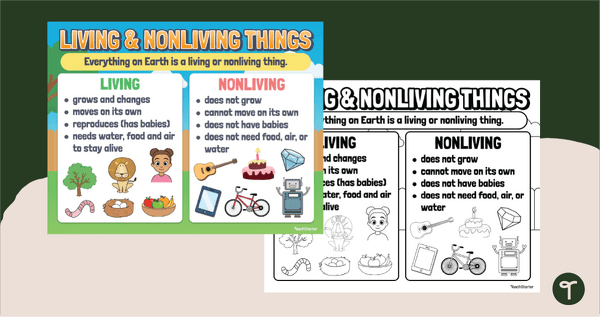
Living and Non-Living Things Poster
Highlight the differences between living and non-living things with an illustrative Living vs. Nonliving Things Anchor Chart
- Plus Plan

Animal Adaptations - Informative Writing Prompt Worksheets
Write to describe animals and their adaptations with a printable pack of informative writing worksheets.
- Free Plan

Free 5 Senses Worksheet
Identify the body parts used to sense things with a free 5 Senses Cut and Paste Worksheet.
- Plus Plan

What Do Living Things Need to Survive? PowerPoint
Teach your students what living things need to survive with an engaging, interactive teaching slide deck.
- Plus Plan

Push and Pull Forces Teaching Slides
Teach your students about push and pull forces with this comprehensive and age-appropriate teaching presentation for primary school science lessons.
- Free Plan

Life Cycle of a Butterfly Concertina Activity
Re-create the life cycle of a butterfly with a printable butterfly life cycle concertina craft.
- Plus Plan

Animal Classification Word Search Pack - Early Years
Introduce your lower-year students to the six animal types/classes with a pack of printable animal word search worksheets.
- Plus Plan

Animal Coverings Teaching Slides
Discover animals with scales, shells, fur, and other body coverings with an interactive teaching slide deck.
- Plus Plan

Plant Life Cycle Worksheet - Cut and Paste
Help your students cement their understanding of the plant life cycle with a cut and paste worksheet.
- Plus Plan
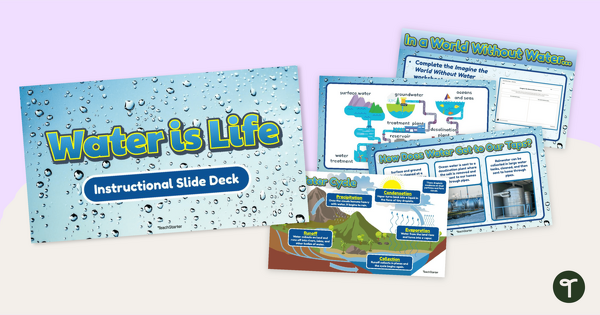
Water is Life - Instructional PowerPoint
Learn about the importance of water to life on Earth, along with where water comes from, with an instructional slide deck.
- Plus Plan

Characteristics of Living Things - Science Worksheets
Identify the characteristics of living things and animal classes with a pack of printable Animal Class Characteristic Worksheets.
- Plus Plan

How Can We Help Our Planet Mini Book
Help your students learn about how to keep our planet clean with a printable Earth Day book.
- Plus Plan

Push and Pull Sorting Activity
Use these push and pull sorting cards as a hands-on activity during your science lessons on forces.
- Plus Plan

Roll to Create an Animal - Adaptations Game
Roll to create an animal with cool adaptations using a fun dice game and report template.
- Plus Plan

Material World Resource Pack
Learn about natural and manmade materials with a printable resource pack.
- Plus Plan
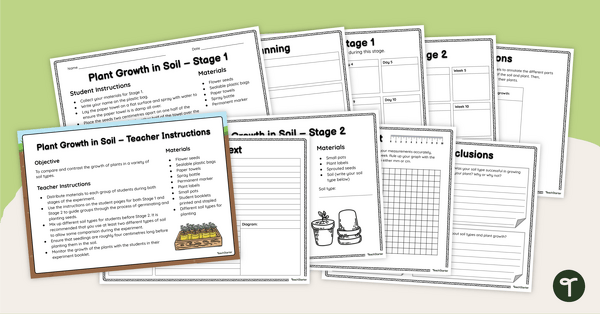
Plant Growth in Soils – Science Experiment
Explore how plants grow in different types of soil with this science experiment perfect for primary school science lessons.
- Plus Plan

Push or Pull? Worksheet
Use this push or pull worksheet when exploring forces and motion in your early years science lessons.
- Plus Plan

Label the Parts of an Animal - Digital Learning Activity
Identify and label the features of animals with an interactive labelling activity .
- Plus Plan

Identify Nonliving and Living Things - Printables
Download a pack of Living or Nonliving? Printables to help your students differentiate between living and nonliving organisms.
- Plus Plan

Types of Soil – Teaching Presentation
Practise identifying different types of soil with this 18-slide teaching presentation.
- Free Plan

Animals and Their Babies Memory Game
Play an animal game for kids to learn about animals and their babies.
- Free Plan

Label the Ant Diagram Worksheet Pack
Learn about the anatomy of an ant with a printable reading passage and ant labeling worksheets.
- Plus Plan

Water Cycle Diagram
Display this water cycle diagram when teaching about the continuous movement of water above and on the surface of the Earth.
- Plus Plan
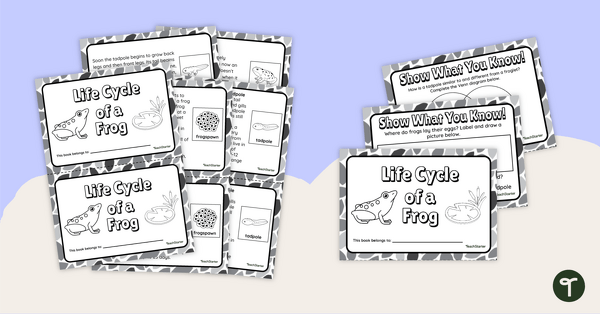
Life Cycle of a Frog – Mini-Book
Read and learn about the life cycle of a frog with this informational reader and activity booklet.
- Plus Plan

Processed Materials Poster
A poster displaying different processed materials and explaining what processed materials are.
- Plus Plan

Natural Materials Poster
A poster displaying different natural materials and explaining what natural materials are.
- Free Plan

Wildlife Conservation Vocabulary Words
Build academic vocabulary with a printable Animal Conservation word wall.
- Plus Plan
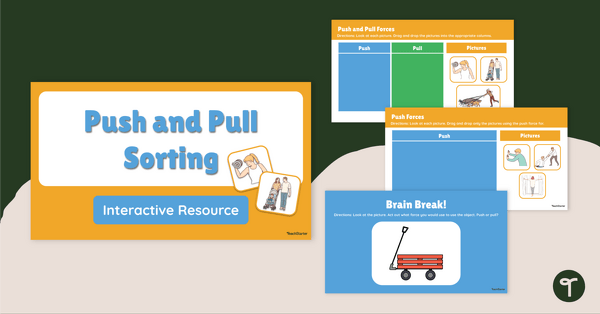
Push or Pull? Interactive Sorting Activity
Explore push and pull forces with your students by playing this interactive sorting game for lower primary students.
- Plus Plan

Plant Life Cycle Anchor Chart
Display and discuss the life cycle of a flower with a printable anchor chart.
- Plus Plan

Rubbish Bin Sorting Activity
Learn about recycling, composting, and sustainable practices for waste management with a fun sorting activity.
- Plus Plan

Forces in the Playground Worksheet
Download this forces in the playground worksheet to help your students explore the pushes and pulls that make playground equipment fun!